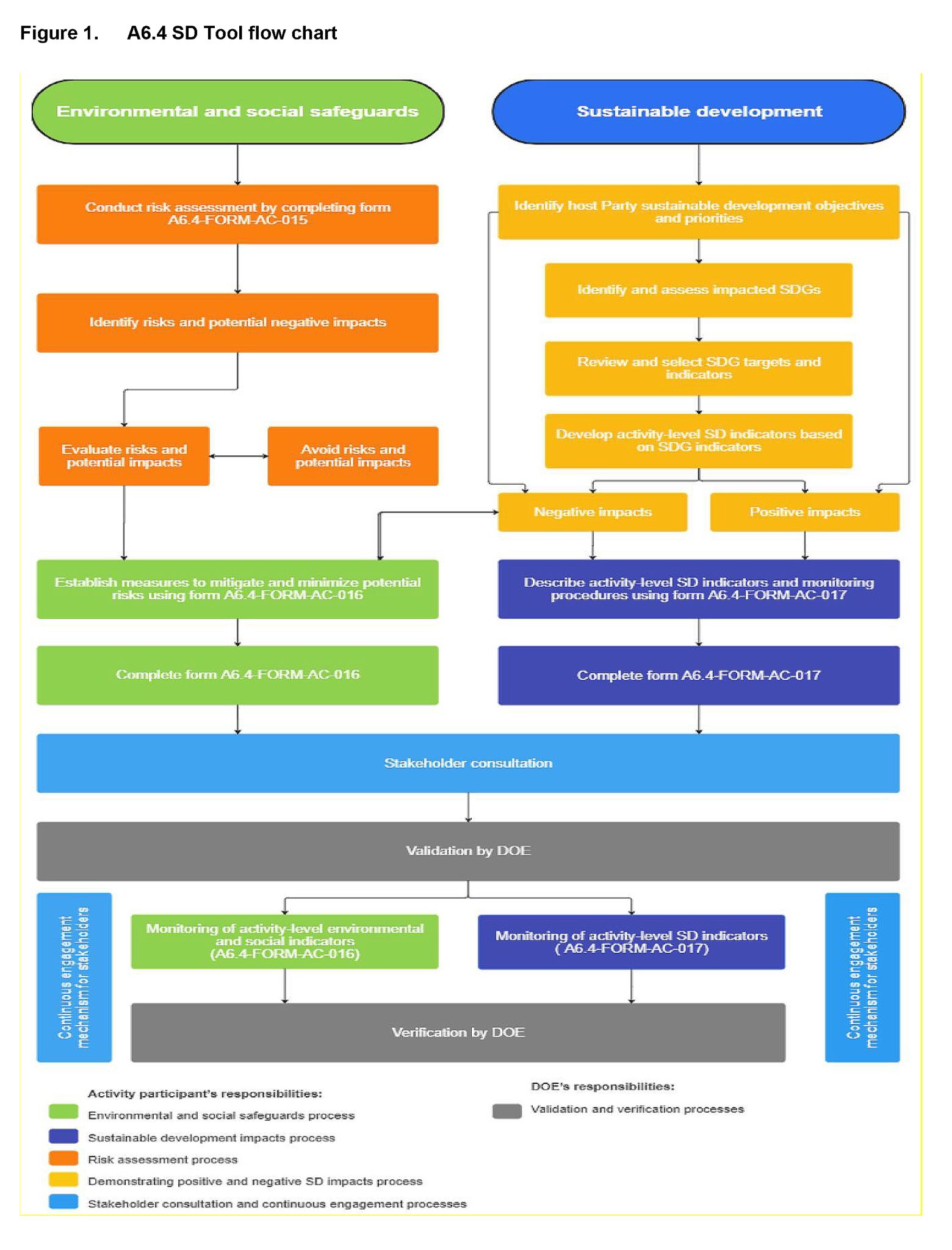Sustainable Development Tool
Sustainable Development Tool

A partnership of

Objective of the SD Tool
Objective of the SD Tool
The objective of the SD Tool is to uphold the principle of “do no harm”, foster sustainable development (SD), and contribute to the 17 Sustainable Development Goals (SDGs).
Scope
The tool applies to all Article 6.4 activities including under the Clean Development Mechanism. Specifically, the tool provides a means for activity participants to demonstrate that they have met the mandatory requirements for identifying and addressing social and environmental risks, as well as for assessing and enhancing the contributions of A6.4 activities to SD in line with SD objectives and priorities of the host Party and the SDGs. It came into force on 9 October 2024 and will be reviewed every 18 months.
Structure:
Activity participants should follow the structure as set out below:
a) Conduct a risk assessment to identify risks and potential impacts, evaluate them, and avoid harm where possible. When avoidance is not feasible, the A6.4 SD Tool instructs participants to minimize impacts as much as possible and, finally, to mitigate any remaining negative environmental and social impacts and risks by establishing activity-level environmental and social indicators;
b) Identify and assess potential positive and negative impacts on the 17 Sustainable Development Goals (SDGs) and host Party SD priorities and establish activity-level SD monitoring indicators;
c) Monitor and report the outcomes of the monitoring against the established activity-level environmental and social indicators and activity-level SD indicators.
This flow chart describes how the SD Tool should be applied
This flow chart describes how the SD Tool should be applied

source: UNFCC In-meeting_SBM014_Draft A6.4 SD Tool_06October2024 see page 13 of 68
Step 1: Risk assessment against Environmental and Social Factors:
The SD tool prescribes 11 environmental and social safeguards against which risks should be assessed. These are all further defined in the document:
Environmental: Energy, air land & water, ecology and natural resources
Social: human rights, labour, health and safety, gender equality, land acquisition and involuntary resettlement, indigenous people, corruption, cultural heritage
Step 2: Impacts on SD goals
Activity participants shall identify the host Party’s SD objectives and priorities, which may include national strategies for SD and/or SDG achievement, SDG national targets and indicators, and economic, social and environmental indicators related to the A6.4 activity.
The “Global indicator framework for the Sustainable Development Goals and targets of the 2030 Agenda for Sustainable Development” provides 17 SDGs, 169 targets and 249 indicators, which must be consulted by activity participants when identifying the impacted SDGs. Activity participants shall establish A6.4 activity-level SD indicators for each identified direct impact to the SDG resulting from the activity, taking into consideration the SDG, SDG targets and SDG indicators. These should be monitorable during the crediting period.
Step 3: Monitoring procedures
Once the A6.4 activity is registered, activity participants shall monitor and report the outcome of monitoring A6.4 activity-level SD indicators in the monitoring report. Monitoring should be done at least annually.
Note: In addition to this general tool, additional safeguards criteria and guiding questions to be applied for carbon dioxide removal activities and for land use, land-use change and forestry activities will be developed by the Supervisory Body as new annexes to include in this SD Tool at an appropriate stage in its development of regulations for activities involving removals

